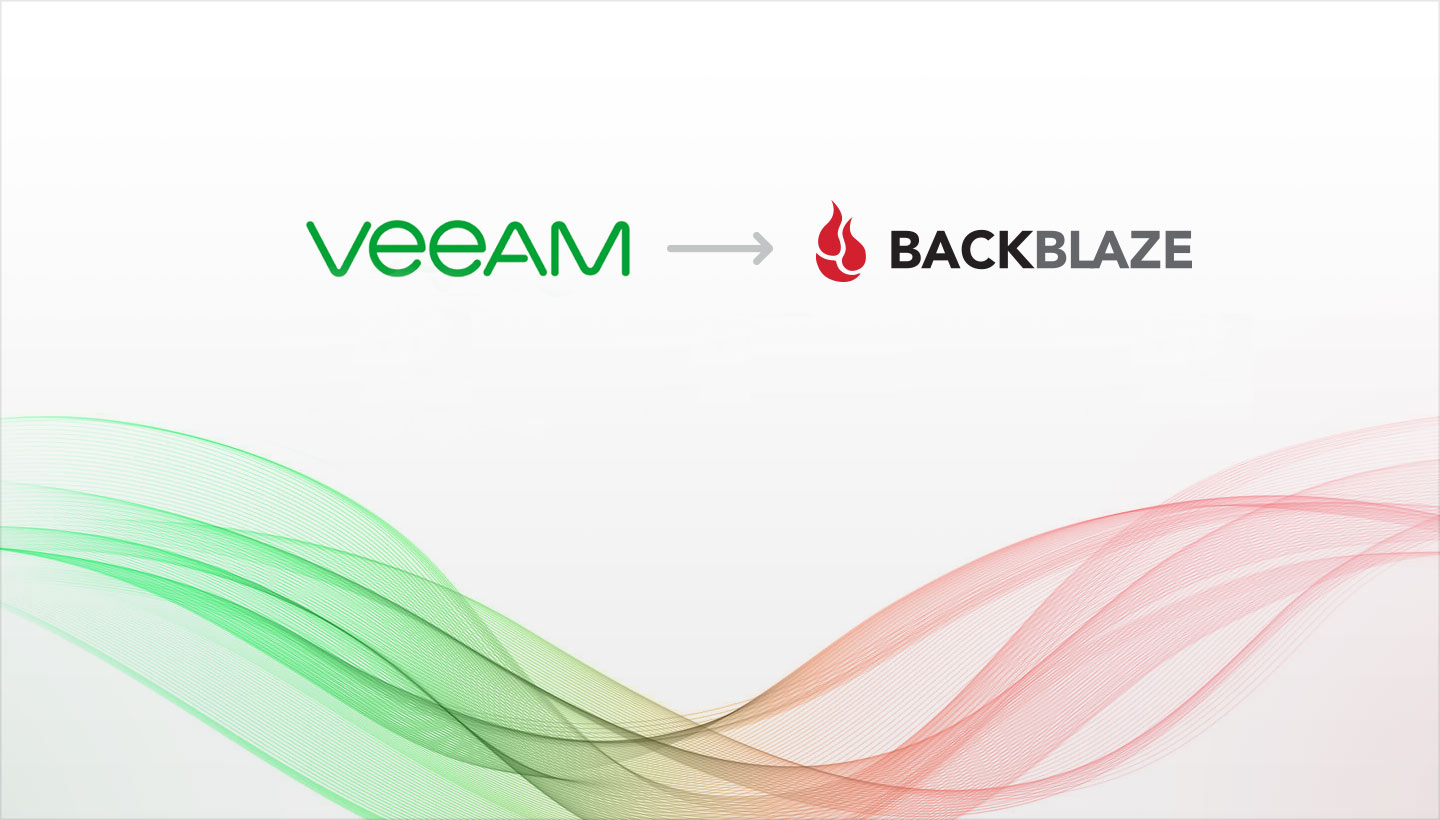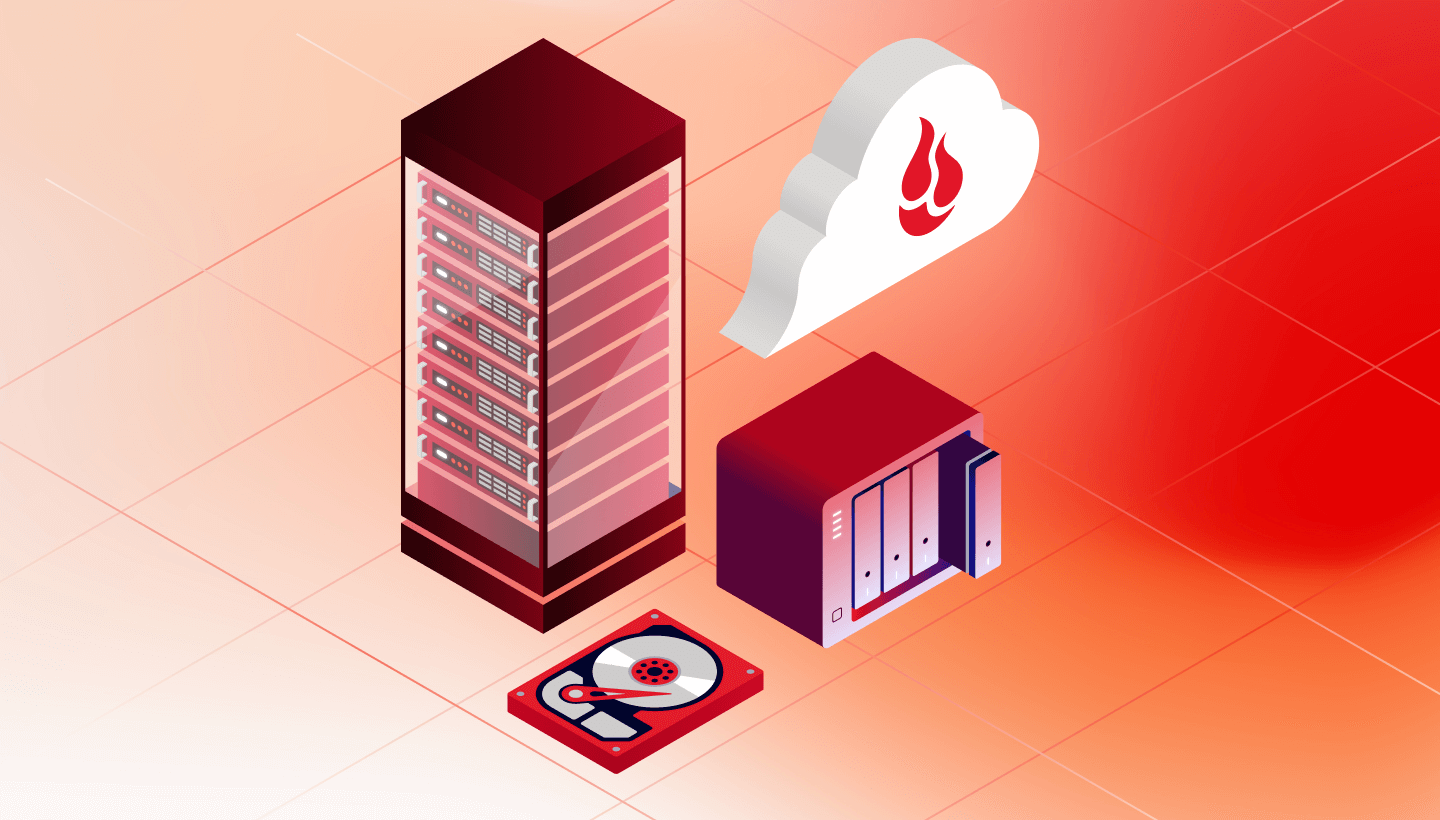
For many users, connecting Veeam to B2 using a solution such as Tiger Bridge will be their first choice. For others, who are still committed to LTO, there are other approaches that can provide a good alternative. In this post, we take a look at backing up Veeam to the Backblaze B2 Cloud using StarWind VTL.
StarWind provides VTL (Virtual Tape Library) technology that enables users to back up their VMs (virtual machines) from Veeam to on-premises or cloud storage. StarWind does this using standard LTO (Linear Tape-Open) protocols. This appeals to organizations that have LTO in place since it allows adoption of more scalable, cost efficient cloud storage without having to update the internal backup infrastructure.
Why An Additional Backup in the Cloud?
Common backup strategy, known as 3-2-1, dictates having three copies at a minimum of active data. Two copies are stored locally and one copy is in another location.
Relying solely on on-site redundancy does not guarantee data protection after a catastrophic or temporary loss of service affecting the primary data center. To reach maximum data security, an on-premises private cloud backup combined with an off-site public cloud backup, known as hybrid cloud, provides the best combination of security and rapid recovery when required.
Why Consider a Hybrid Cloud Solution?
The Hybrid Cloud Provides Superior Disaster Recovery and Business Continuity
Having a backup strategy that combines on-premises storage with public cloud storage in a single or multi-cloud configuration is becoming the solution of choice for organizations that wish to eliminate dependence on vulnerable on-premises storage. It also provides reliable and rapidly deployed recovery when needed.
If an organization requires restoration of service as quickly as possible after an outage or disaster, it needs to have a backup that isn’t dependent on the same network. That means a backup stored in the cloud that can be restored to another location or cloud-based compute service and put into service immediately after an outage.
Hybrid Cloud Example: VTL and the Cloud
Some organizations will already have made a significant investment in software and hardware that supports LTO protocols. Specifically, they are using Veeam to back up their VMs onto physical tape. Using StarWind to act as a VTL with Veeam enables users to save time and money by connecting their on-premises Veeam Backup & Replication archives to Backblaze B2 Cloud Storage.
Why Veeam, StarWind VTL, and Backblaze B2?
What are the primary reasons that an organization would want to adopt Veeam + StarWind VTL + B2 as a hybrid cloud backup solution?
- You are already invested in Veeam along with LTO software and hardware.
Using Veeam plus StarWind VTL with already-existing LTO infrastructure enables organizations to quickly and cost-effectively benefit from cloud storage.
- You require rapid and reliable recovery of service should anything disrupt your primary data center.
Having a backup in the cloud with B2 provides an economical primary or secondary cloud storage solution and enables fast restoration to a current or alternate location, as well as providing the option to quickly bring online a cloud-based compute service, thereby minimizing any loss of service and ensuring business continuity. Backblaze’s B2 is an ideal solution for backing up Veeam’s backup repository due to B2’s combination of low-cost and high availability compared to other cloud solutions such as Microsoft Azure or Amazon AWS.
Using Veeam, StarWind VTL, and Backblaze B2 cloud storage is a superior alternative to tape as B2 offers better economics, instant access, and faster recovery.
For more information, see StarWind VTL for Backblaze B2 and Veeam.




